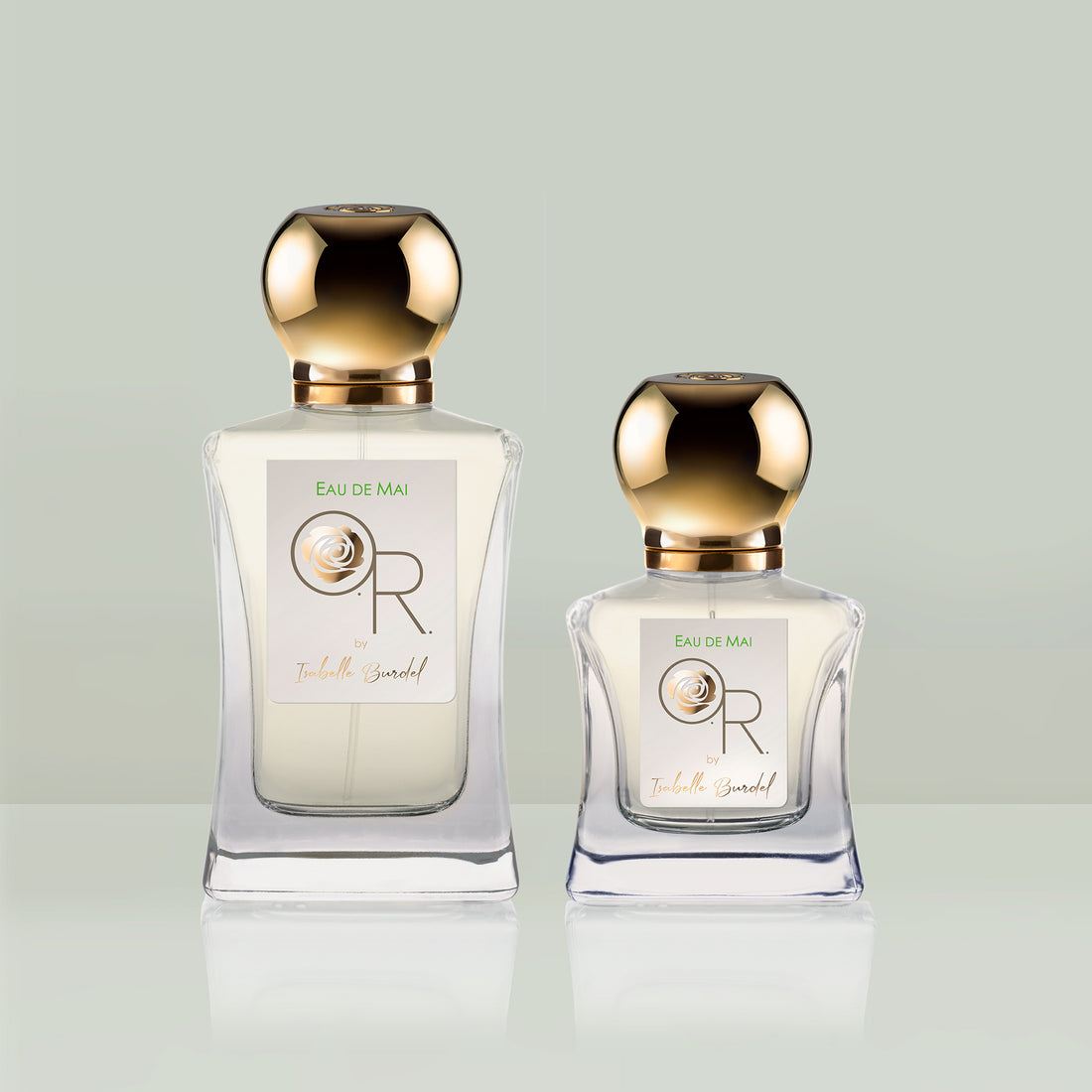Since the early 20th century, amber perfume has established itself as a classic in the world of perfumery. A blend of enchanting resinous notes, the amber blend is unrivaled in its ability to warm the winter. Sensual and luminous, it drapes us in its embracing trail, with iridescent glimmers, to captivate us even more.
Behind the myth: what is an amber perfume?
Common language often associates amber perfumes with amber, the beautiful stone with golden and honeyed reflections. However, there is actually no connection between the two.
The amber blend also differs from ambergris, which is a naturally occurring intestinal secretion of the whale that is expelled into the sea in the form of blocks. This substance of animal origin naturally undergoes oxidation through a combination of seawater and sunlight, imbuing it with amber, smoky, and saline nuances. The use of ambergris has become rare today due to its unpredictable availability and significantly increased cost.
The term "amber perfume" actually refers to a blend of balsamic notes with a warm scent that emerged in the early 20th century.
Amber perfume: history and origins
The amber accord is a blend of resins that originated in the early 20th century with the famous Laire Bases. These bases were, in a way, "mini-perfumes" used to showcase new synthetic molecules by dressing them in other materials. Many iconic perfumes from that era were built around these bases. Among them, "Ambre 83," which combined vanillin with balms like benzoin and labdanum, not to mention a touch of musk and patchouli.
Thus, the amber blend was born during the artistic period of Fauvism, where labdanum, a resin with animal, leathery, and vanilla nuances, served as the cornerstone of this round, sensual, and balsamic note. An immensely attractive blend that would later be featured in numerous perfumes. The first to showcase it was Coty's "Ambre Antique" (1905), followed by Guerlain's "Shalimar" (1925), which launched the lineage of amber or oriental fragrances.
The amber perfume: olfactory portrait
Amber perfumes are based on a marriage of resinous notes such as labdanum, benzoin, Tolu balsam, Peru balsam, vanilla, or tonka bean, not to mention synthetic notes like vanillin or coumarin. These warm materials infuse the amber accord with sensual and captivating qualities. The warm and voluptuous nature of amber fragrances is perfect for autumn and winter (although there's no rule against wearing them in fairer weather).
Iconic ingredients of amber perfume
Various ingredients can be used to craft an amber accord, but labdanum, vanilla notes, or benzoin are essential to this category. Labdanum comes from the cistus, a Mediterranean shrub covered in an aromatic resin called "labdanum," which prevents the plant from dehydrating. The branches of this shrub can be distilled to obtain cistus essential oil with amber, medicinal, and leathery undertones. The extraction of the resin using volatile solvents yields an absolute of labdanum with an amber, warm, slightly animalic scent.
Vanilla is the fruit of the pollination of an orchid, mainly cultivated in Madagascar. Extracting the pod with solvents reveals a vanilla absolute with multiple facets: gourmand, powdery, woody, tobacco, leathery, liqueur-like, and spicy. The primary organic component of vanilla is vanillin, a molecule with a powdery and gourmand character isolated in the late 19th century, used to enhance or replace various aspects of the vanilla pod.
Benzoin comes from a tree in Laos and Vietnam called Styrax Tonkinensis. The resin extracted from the bark solidifies into "tears" (hence the term "benzoin tears"). The extraction of this resin using volatile solvents yields a benzoin absolute with vanillic, woody, and creamy tones, with a slight medicinal edge.
The evolution of amber perfume
While amber perfumes emerged in the early 20th century, it was the niche perfumery, with its strong emphasis on materials, that breathed new life into them. This began with "L'Eau d'Ambre" in 1978 and continued with "Ambre Sultan" by Serge Lutens (2000). Since then, niche brands and exclusive lines from major houses have continued to explore this highly popular blend.
Amber fragrances are sometimes associated with very powerful synthetic molecules known as "amber woods," valued for their warm and enveloping qualities. Ambroxan is one such synthetic molecule obtained from clary sage, which can evoke ambergris with its amber, woody, and smoky nuances. Over the past fifteen years, the perfumer's palette has expanded with a wide range of amber woods, highly appreciated for their strength and longevity, though they can be quite overpowering for the nose. While they share addictive aspects with amber notes, they offer less roundness, sweetness, and subtlety.
Originally, the amber accord served as the foundation for so-called "oriental" perfumes, which embellished it with spicy or woody notes. The oriental family was one of the seven olfactory families, alongside the citrus, aromatic, floral, chypre, woody, and leather families. Since 2022, the "oriental" family has become the "amber" family to avoid any colonialist or discriminatory connotations, though it still designates the same olfactory universe.
Amber perfume at olfactory revelation
With 35 years of experience as a perfumer and independently for the past two decades, Isabelle Burdel creates custom perfumes for diverse personalities seeking an exclusive olfactory signature in her private salon in Cannes. She translates her clients' emotions into scents to reveal their personalities—a skill she now unveils through her brand, Olfactory Revelation.
Among this collection of nine fragrances, "Ambre Fleuri" is a true amber perfume, based on a bed of vanilla and labdanum, bordered by powdery notes of violet and carnation, refreshed by a touch of bergamot at the opening. A voluptuous, enveloping and comforting composition. If amber perfumes intrigue you and you dream of learning more, don't hesitate to order the discovery set. It's the perfect opportunity to experience their sensual tones on your skin.






